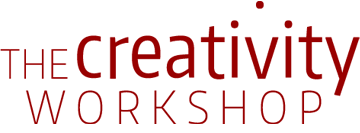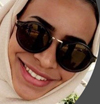Why Digital Note-Taking will Never Replace the Physical Journal
By Bradford Morrow
Hemingway had his Moleskine notebooks, Kafka his “Blue Octavos.
Wordsworth had his “Lakes” Notebook, and Virginia Woolf her journals. But why bother to keep notebooks in a digital age?
Some fortunate writers possess steel-trap memories and rarely need to jot things down. Their images and ideas materialize, as if on cue, when required for the cauldron of composition. Most, however, have developed different methods for taking research notes and roughing out early drafts. They collect scribbled-on scraps of paper, bar napkins, the backs of receipts, whatever is at hand, on their roundabout way to the writing table. Others thumb-type notes or pencil marginalia in books they happen to be reading. Still others dictate memos for later transcription. The most sensible perhaps, myself from time to time among them, keep a pocket notepad handy for capturing a bit of delicious eavesdropped dialogue or observing something, anything, seen or heard or tasted or smelled or touched that might be relevant to whatever writing project they have underway.
My memory is good, but capricious at times. My scraps of paper get misplaced or wind up in the laundry. I don’t want to figure out dictation software. And my thumbs are hopeless, which is only part of the reason I hate texting. In an era of smart phones, palm-sized digital cameras, and featherweight laptops—also known as “notebooks”—the very idea of lugging around a heavy, folio-sized, hardcover Boorum & Pease record-ruled 9-300-R ledger or oversized black spiral-bound artist sketchbook, would seem at once masochistic and medieval. Yet, these behemoths, straight out of some Dickensian accountant’s office or landscape architect’s atelier, have served as my notebooks of choice for well over 20 years.
I don’t tend to use my notebooks as diaries or journals. With rare exceptions, everything that I write, draw, paste, and tape in them has to do only with the novel I’m currently working on. In a rural cemetery in Nebraska, I collected beautiful names from generations long past to resurrect in the book I was writing at the time, balancing my hefty notebook on the surrounding wrought-iron fence. At Three Rivers, New Mexico, between Tularosa and Carrizozo, I sketched petroglyphs dating from about 900-1400 AD carved on outcroppings and boulders strewn across a formidable balsatic ridge, making guesses about their iconography and creating a fictional space to work with as I did. In Italy, in Ireland, wherever my research takes me, the generous canvas that a large notebook affords has a curious, essential freeing effect on me. If I think it, I write it down; if I see it, I draw it; if I clip it out, I tape it in. Even when I’m back home, in the kitchen of the upstate New York farmhouse where I write, I open my steadfast notebook—its sewn or spiral-bound pages flat on the table, revealing its full 14″ x 18″ spread—and voluminously, a bit obsessively, write out the family trees of my characters, including full names, birth and death dates, even vocations, of distant relatives who often never ultimately find their way into whatever book I am working on.
Why do all this? Why carry around this antiquated technology? It would have been far quicker and easier to snap pictures of those gravestones and petroglyphs, scan those clippings, maybe set up a computer spreadsheet for my various invented progeny. I’m not, after all, a visual artist by any stretch. And my handwriting has continued to devolve toward illegibility.
Simply put, it has to do with the pure visceral nature of the act. When I draw a castle, a two-trunked willow, a billboard, a bird, the process of limning their outlines and angles—their optical information—makes them, for me, far more animated, individual, and finally more memorable than if I’d photographed them. Similarly, if I manually form the letters of my words, scribe out sentences, snatches of dialogue, however disjointed or inchoate or fragmentary, they register on my consciousness more fully than if I were to type them. This is especially true when I’m researching a novel—the stage in which I’m most impressionable, longing to learn, there at the foot of the mountain I must build as I climb.
With few projects has this method of gathering information and sculpting a narrative been more useful to me—the possible exceptions are my novels Trinity Fields and Ariel’s Crossing—than The Prague Sonata. My Boorum & Pease ledger and spiral-bound artist sketchbook were constant companions in Prague, almost collaborators. Even when I wasn’t working in them, I held one cradled against my left side as I walked around, a kind of insecurity blanket that kept me alert to all the unfamiliar sights and sounds my senses were registering. When I saw, heard, thought of something that might be useful to the novel, out from under my arm it came and, sitting in Old Town Square on some steps or in the long grasses on Petřín Hill overlooking the city, I wrote notes, drew maps, collected my quirky intel.
If memory is a function of the strength of one’s original perception of something, inscribing it by whatever means into a notebook ups the vitality of that perception exponentially. Later, when I’m back home, the little pressed flowers and puppet theater programs Scotch-taped into my notebook alongside pages and pages of annotations, imagery written and sketched, are necessary memory prompts as vivid and tactile as when I was out in the field. Shifting to my laptop, I have my notebooks to remind, inspire, sustain, and encourage me. They’re unabashedly like old friends, ones whose recollections and insights I can trust. And then, imagination kicks in.





